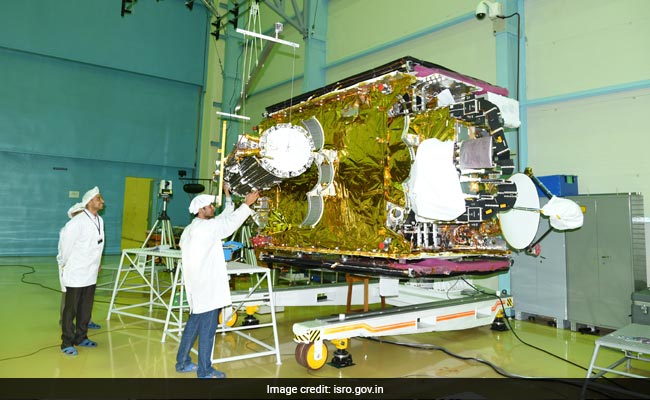8 years ago
New Delhi:
ISRO's big launch of a home-made communications satellite - the GSAT-6A - twin of the GSAT- 6 launched in 2015 - lifted off from Sriharikota today. The two rockets in tandem will provide signals that that would permit two-way exchange of data even from very remote locations where mobile connectivity is still limited -- which makes it very useful for the armed forces. The GSLV is also called "Naughty boy" of Space Agency ISRO as only five of GSLV's 11 earlier launches have been successful. Around 400 scientists and engineers have been called in to help with the launch at the Satish Dhawan Space Center, located on the coast near Chennai.
Here are the live updates of ISRO's GSAT-6A launch:
Here are the live updates of ISRO's GSAT-6A launch:
PM Modi congratulates ISRO for the "successful launch of GSLV-F08 with indigenous cryogenic stage"
GSAT-6A, a communication satellite, will provide new possibilities for mobile applications. Proud of @isro for taking the nation towards new heights and a brighter future.
- Narendra Modi (@narendramodi) March 29, 2018
The communications satellite GSAT-6A carries one of the largest antennas that has been built by ISRO, said its former chairman Kiran Kumar.
GSAT 6A launched successfully into the orbit. This is the fifth successful launch of a GSLV Mk.2 rocket with an Indian-built cryogenic upper stage engine.
GSLV-F08 Successfully launches GSAT-6Ahttps://t.co/YWvgUeyETw
- ISRO (@isro) March 29, 2018
Leaving behind plumes of smoke, the 49.1 metre tall GSLV soared majestically into clear skies, carrying the 2,140 kg GSAT-6A satellite to be injected into a geostationary orbit at a height of about 36,000 km.
GSAT-6A satellite successfully deployed from Geosynchronous Satellite Launch Vehicle
The GSAT-6A satellite has successfully deployed from the Geosynchronous Satellite Launch Vehicle after the end of the rocket's third stage engine burn.
GSLV: The "Naughty Boy"
The GSLV rocket which will carry up the communications satellite has been dubbed the "Naughty Boy" by ISRO scientists. The rocket has had a patchy record, with five of its 11 flights ending in failure.
The antenna of the GSLV, which has a diameter of 6 meters, will open up like an umbrella once the satellite is in orbit. The huge size of the antenna gives it more power, which ensures that a two-way exchange of data -- data, video or voice -- can be carried out through small hand-held devices from any corner of the country.
GSAT-6A satellite hits the sky


The twin of the GSAT-6A satellite, GSAT- 6, was launched in 2015. Click here for details.
The handheld devices have been fine-tuned by the Defence Research and Development Organisation. The organization hopes to deploy a large number of these, especially for security personnel in Maoist-hit areas.
GSAT-6A lifts off from Sriharikota
The GSAT-6A, which it will carry, is a very special communications satellite that weighs 2066 kg and cost around Rs. 270 crore.


The two satellites in tandem will provide signals that that would permit two-way exchange of data even from very remote locations where mobile connectivity is still limited -- which makes it very useful for the armed forces.
The cryogenic engine of the rocket, which is being tested for the sixth time, has new company: The high thrust Vikas engine, which works on liquid propellants, and will be used in the second stage to give the rocket a higher thrust.

